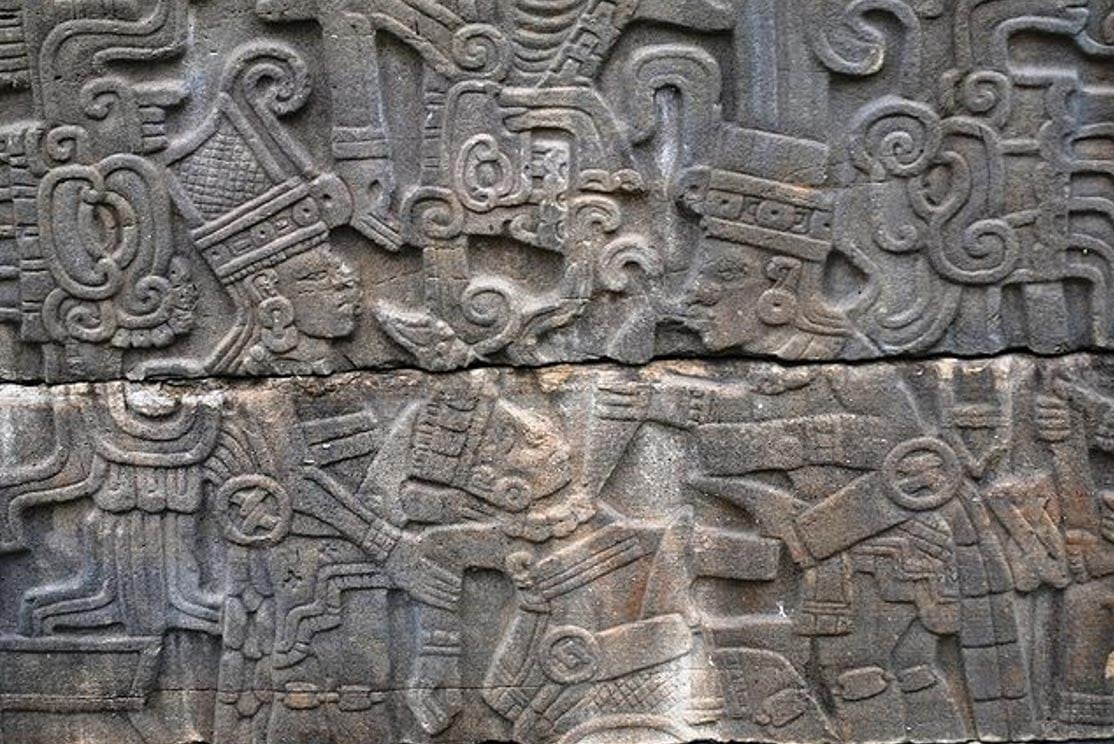Decapitation discovery reveals gruesome practices of the ancient Incas
In the Andes region, in Bolivia, on the shores of Lake Titicaca archaeologists have recently made a distinctly gruesome discovery at a site known as Wata Wata, in the form of three decapitated heads.
The heads belong to one male and two female adults, all of whom had suffered considerable violence as part of an act of execution, around the time of death or after it.
Pre-Columbian art often depicts acts of decapitation as authors such as Christopher L. Moser have pointed out. The practice is also known from the ballcourt game that was commonly played by all the Mesoamerican cultures prior to the arrival of the Spanish, from the Olmecs to the Aztecs. According to Kathleen Cohen, the game began to feature sacrificial elements when the Maya took it over from the Toltecs. Archaeologists had mostly dismissed these depictions as figurative, but recent evidence, including the discovery of a collection of decapitated human heads, has provided physical proof of its existence among Pre-Columbian cultures.
- La Quemada civilization in Mexico ate their enemies and displayed their bones
- Archaeologist finds defleshed human bones in ancient religious complex in Bolivia

Relief sculpture from the Great Ballcourt at Chichen Itza, depicting a decapitated ballplayer. (Wikimedia Commons)
Wata Wata, otherwise known as Inti-Wata, is an important cultural site, known for its historical remains dating from the Inca period. The site is located on the shores of and very close to the Isla del Sol (‘Island of the Sun’) where there are over 80 Inca sites dating from the 15 th century. Archaeologists believe that this area may have been occupied as far back as the third millennium BC. The site itself contains evidence of Inca agriculture and small-scale industry, including areas for building ships of reeds, tool making and weaving. The area is also the home of the Kallawayas, a group of traditional healers who can trace their descendants back to the Tiwanaku culture and the pre-Inca period.

The terraces of Inti Wata, Bolivia (Wikimedia Commons)
It has been thought so far that decapitation among the Inca were relatively rare. The most well-known practitioners were the Jivaro Indians, who remained unconquered by the Spaniards because of their ferocity. They were known for their taking and shrinking of human heads. Pre-Incan cultures such as the Lambayeque or Sican people also practiced decapitation, as shown by a discovery of decapitated remains around a pyramid in northern Peru in 2011. Other groups, such as the occupants of the city of La Quemada in Mexico, practiced cannibalism and hung up the bones of their enemies for all to see.

Shrunken head, Ecuador. Image credit: Ancient Origins
However, more recently, the discovery of three human heads in the city of Cuzco by archaeologists suggests that the Incas did indeed take heads, displaying them as trophies after a battle.
The remains discovered at Wata Wata can be dated to between 200 AD and 800 AD, a time of transition between the Late Formative Period and the Tiwanaku Period. Two of the skulls of the victims had been subjected to the ancient practice of cranial vault modification involving binding the head during childhood in such a manner as to produce a flattened or cone-shaped head.
The study of the Wata Wata site was conducted by Sara Becker and Sonia Alconini of the University of California, Riverside and the University of Texas, San Antonia. Their findings were published in the Journal of Latin American Antiquity. They found that the three individuals had experienced considerable violence at or around time of death. This included beheading, cranial and facial fracturing, defleshing, jaw removal and possible eye extraction. The male adult had his nose broken and may also have been clubbed to death, as was one of the females. It’s likely that all three were already dead by the time the perpetrators set about removing their flesh. The heads were then entombed in a ritual cache that was sealed with a capstone.

One of the decapitated skulls showing healed cranial trauma: (a) close-up of cut marks around the eye orbit. Credit: Becker and Alconini.
The beheading of the victims was significant on the basis that skulls in Andean societies were often regarded as symbols of power, both in life and the afterlife. From this Becker and Alconini conclude that this gruesome fate was inflicted on them in order to depose them as leaders, removing their authority and influence, rather than as part of a cult to appease gods or ancestor spirits. The deaths of the victims may also have been a method of signalling to the community important changes in the order of things during a political transition.
Featured image: Relief depicting beheading on one of the panels of the South Ball Court at Tajin, Veracruz, Mexico (Wikimedia Commons)


















Comments
I read that the Maya, whilst using blood-letting rituals amongst the aristocracy, did not generally indulge in human sacrifice. The theory was that tribal groups, defeated and displaced by Aztec expansion, brought ritual human sacrifice with them. The sculpture seems to support this.
As far as condescending attitudes to Meso America are concerned, it's possible to be violent and technically sophisticated simultaneously, as much of the human race is currently demonstrating.
Good to see a lively debate going on here. One thing I would point out though is that there are numerous hints in world mythology that indicate human sacrifice, particularly decapitation, was an accepted practice at some point in ancient history. For example, there is the legend attached to the Capitoline hill in Rome in which the hill got its name because a skull was discovered while the foundations were being laid for the Temple of Jupiter (from the Latin ‘caput’ meaning ‘head’). Anne Ross in Pagan Celtic Britain argues that there is ample evidence for head-taking in Celtic Britain and Europe (the ‘head shrines’ at Entremont and Roquepertuse in Southern France may also support this conclusion). The thinking goes, as far as I can remember, that the Celts believed the soul or spirit resided in the head, therefore the Celts often used to decorate their huts with the skulls of enemy chieftains or prisoners, either as trophies or perhaps as ‘guardians’ to ward off evil spirits. But of course that is open to debate and Ross’s arguments have themselves been challenged.
To think all all native Americans were living in harmony and peace until "the gringos" showed up is unrealistic and simply untrue.
There is ample evidence that human sacrifice, cannibalism, and other such barbaric rites, were widespread and endemic among the ancients of many (if not all) ethnicities. It is often considered part of "religion" but it really was nothing more than powerful instinctive drives left over from our animalistic origins. The so-called Judeo-Christian culture perhaps developed anciently as a revulsion of decent minded individuals against such tendencies. Moses wrote that the law of Noah allowed only the eating of animals, and that the blood of Man was not to be shed. The story of Abraham substituted the sacrifice of animals for humans, and circumcision for infanticide. The Israelites became scattered throughout the nations of the old world, bringing a concept of contempt for the bloodthirsty gods of antiquity with them. The Jews, who were left behind in the land of Abraham, spawned a new religion called Christianity, that substituted even the old animal sacrifices with a benign vegetable communion. That appealed to those scattered Israelites all over Europe and a healthy disdain for the old bestial instincts was thus propagated.
The Meso-American cultures were late to the party and perhaps the "Gringos" were a bit heavy handed in their reaction to their barbarisms, but there is no reason to doubt the general essence of our understanding of history, or the forensic evidence of archaeology in my view.
I have to agree with you. Yet the likes of "Apocalypto" remains to perpetuate the myth. The gringo's just won't accept that the Inca and Maya and even the Aztec had a thriving, flourishing,advanced societies long before and trouble arrived from across the pond. But then the gringo's don't ever like to admit they are invaders. If it's not 'bringing salvation', it 'bringing freedom and democracy' :::cough:::- both of which mean death thru violence. But the history books paint lipstick on pigs ad infinitum. When you own the publishing companies, you write history the way that suits you best.
Pages